Composite 365 Siding A Comprehensive Guide
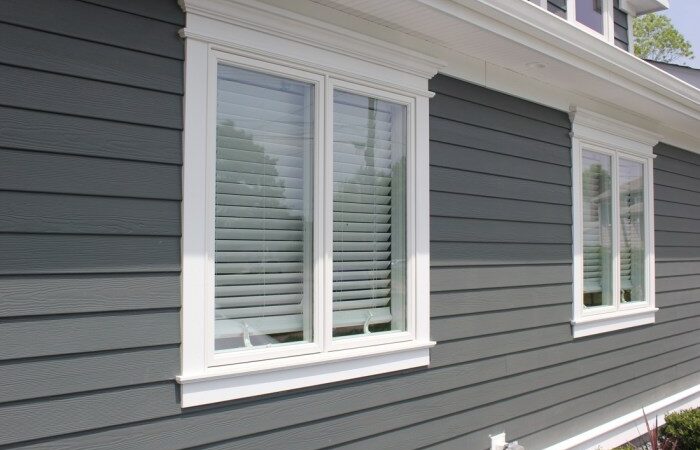
Composite 365 siding offers a compelling alternative to traditional siding materials. This guide dives into its manufacturing, diverse styles, and performance characteristics, comparing it to vinyl, wood, and fiber cement. We’ll explore installation, maintenance, durability, and aesthetic appeal, and even address common consumer concerns, giving you a complete picture before you choose your next siding.
We’ll cover everything from the specific composition of Composite 365 siding and its unique manufacturing process to practical advice on installation, including troubleshooting common problems. We’ll also delve into the long-term performance aspects, such as weather resistance and energy efficiency, alongside design considerations to help you seamlessly integrate this siding into your home’s aesthetic.
Product Overview
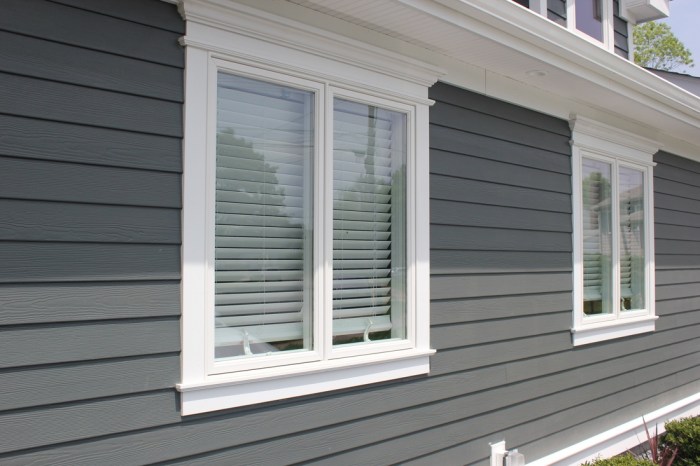
Source: sidingofatlanta.com
Composite 365 siding offers a durable and attractive alternative to traditional siding materials. It combines the best features of wood and vinyl, resulting in a low-maintenance, long-lasting exterior cladding option for homes and businesses. This overview will explore the manufacturing process, available styles, material composition, and cost-effectiveness compared to other siding choices.
Composite 365 Siding Manufacturing
Composite 365 siding is manufactured using a process that blends various materials to create a strong, weather-resistant product. Typically, this involves combining wood fibers, polymers, and other additives. These components are mixed, extruded into the desired shape (e.g., planks, shakes, panels), and then cured. The curing process involves applying heat and pressure to solidify the material and enhance its durability. Different manufacturers may have slight variations in their exact processes, but the fundamental principles remain consistent. The final product undergoes quality control checks to ensure consistency and adherence to industry standards.
Composite 365 Siding Types and Styles
Composite 365 siding is available in a range of styles to complement diverse architectural designs. Common styles mimic the appearance of traditional materials such as wood clapboard, cedar shakes, and even stone. Color options are extensive, offering homeowners a wide palette to choose from, enabling them to personalize their home’s exterior. The variety of textures and finishes further enhances the aesthetic versatility of this siding option. Some manufacturers offer different thicknesses and profiles to suit specific needs and preferences.
Material Composition Comparison
Composite 365 siding distinguishes itself from other siding materials through its unique composition. Unlike vinyl siding, which is entirely plastic, composite siding incorporates wood fibers, providing added strength and a more natural look. Compared to wood siding, composite siding is far more resistant to rot, insect damage, and warping. It surpasses fiber cement siding in terms of impact resistance and requires less maintenance. The blend of materials in composite siding results in a product that balances the aesthetic appeal of natural materials with the low-maintenance characteristics of synthetic materials.
Cost, Lifespan, and Maintenance Comparison
The following table compares Composite 365 siding with other popular siding options:
| Siding Type | Cost (per sq ft) | Lifespan (Years) | Maintenance |
|---|---|---|---|
| Composite 365 | $5 – $12 | 30-50 | Minimal; occasional cleaning |
| Vinyl | $3 – $8 | 20-30 | Low; occasional cleaning |
| Wood | $8 – $20+ | 15-30 (depending on wood type and maintenance) | High; regular painting, staining, and repairs |
| Fiber Cement | $6 – $15 | 30-50 | Moderate; occasional cleaning and painting |
*Note: Cost estimates are approximate and can vary depending on factors such as location, installer, and specific product features.*
Installation and Maintenance
Getting your Composite 365 siding installed correctly is key to enjoying its long-lasting beauty and protection. Proper installation and regular maintenance will ensure your investment remains attractive and functional for years to come. This section details the process, highlighting important steps and offering solutions to common problems.
Tools and Materials Required
Before starting, gather all necessary tools and materials. This will streamline the installation process and prevent delays. Having everything prepared beforehand significantly reduces the risk of errors and ensures a smoother workflow.
- Measuring tape
- Level
- Circular saw or hand saw
- Drill with appropriate drill bits
- Safety glasses and gloves
- J-channel, starter strip, and other trim pieces (as needed)
- Caulk
- Screws or nails (specified for Composite 365 siding)
- Composite 365 siding panels
Step-by-Step Installation Guide
Proper installation involves a series of precise steps. Following these instructions carefully will yield a professional-looking and durable siding installation. Remember to always consult the manufacturer’s instructions for specific details related to your particular siding panels.
- Preparation: Ensure the wall surface is clean, dry, and free of any debris or loose materials. Repair any damaged areas before installation.
- Install Starter Strip: Attach the starter strip along the bottom of the wall, ensuring it’s level and plumb.
- Install J-Channel (if needed): Install J-channel around windows and doors to provide a clean finish.
- Install First Panel: Position the first siding panel, ensuring it’s flush with the starter strip and aligned vertically. Secure it with screws or nails, following the manufacturer’s recommended spacing.
- Install Subsequent Panels: Overlap each subsequent panel with the previous one, ensuring proper alignment and fastening. Maintain consistent spacing between panels.
- Install Trim Pieces: Install corner trim, window trim, and other necessary trim pieces to complete the installation.
- Caulking: Apply caulk to seal all seams and gaps to prevent water penetration.
Common Installation Issues and Solutions
During installation, some challenges may arise. Understanding these common problems and their solutions will aid in a successful project.
- Uneven Siding: Ensure proper use of a level at each stage of installation. Re-check measurements and adjust panels as needed.
- Gaps Between Panels: Verify consistent overlap and proper fastening. Use shims if necessary to correct minor misalignments.
- Damaged Panels: Carefully inspect panels before installation and replace any damaged ones.
- Difficulty Cutting Panels: Use a sharp blade and a straight edge for accurate cuts. Consider using a scoring tool to prevent chipping.
Visual Representation of Proper Installation
Imagine a wall. The bottom has a horizontal starter strip. The first panel is installed vertically, flush against this strip. Subsequent panels overlap the previous ones, creating a uniform, vertical pattern. J-channel neatly frames windows and corners, creating a clean, finished look. All panels are securely fastened, and all seams are sealed with caulk.
Composite 365 Siding Maintenance and Cleaning
Regular maintenance is crucial for preserving the appearance and longevity of your Composite 365 siding. A simple cleaning routine can prevent issues and keep your home looking its best.
- Regular Cleaning: Wash the siding periodically with a garden hose and a mild detergent. Avoid harsh chemicals or abrasive cleaners.
- Spot Cleaning: Address stains or dirt promptly. Use a soft brush and mild detergent for most stains. For stubborn stains, consult the manufacturer’s cleaning recommendations.
- Inspection: Regularly inspect the siding for any signs of damage, such as cracks or loose panels. Repair or replace damaged sections promptly to prevent further deterioration.
Performance and Durability
Composite 365 siding boasts impressive performance and durability characteristics, making it a long-lasting and low-maintenance choice for your home’s exterior. Its resilience against various weather conditions and potential damage contributes significantly to its overall value and longevity. Let’s delve into the specifics.
Weather Resistance
Composite 365 siding is engineered to withstand a wide range of weather extremes. Its composition resists moisture absorption, preventing warping, rotting, and the growth of mold and mildew—common problems with traditional wood siding. The material’s resistance to UV degradation means it won’t fade or crack under prolonged sun exposure, maintaining its color and aesthetic appeal for years. This exceptional weather resistance translates to reduced maintenance and a longer lifespan compared to many alternative siding materials. For example, in regions with heavy snowfall and frequent freeze-thaw cycles, Composite 365 siding demonstrates superior performance, resisting damage from ice and snow accumulation.
Impact Resistance and Durability
Beyond weather resistance, Composite 365 siding excels in impact resistance. Its robust construction effectively absorbs impacts from hail, debris, and accidental bumps, minimizing the risk of dents or damage. This durability translates to lower maintenance costs over the siding’s lifespan, as repairs become less frequent. A comparison with vinyl siding reveals a significant advantage; Composite 365 is less prone to denting and cracking under impact, making it a more robust choice for areas prone to severe weather or accidental damage. For instance, a direct impact from a baseball might leave a minor scuff on Composite 365, whereas the same impact on vinyl siding could cause a noticeable dent or crack.
Energy Efficiency
Composite 365 siding contributes to improved energy efficiency in homes. Its inherent properties, combined with its potential for installation with enhanced insulation techniques, help reduce heat transfer. This can lead to lower energy bills, particularly in regions with extreme temperatures. Compared to traditional wood siding, which can allow for significant heat loss in winter and heat gain in summer, Composite 365 provides better insulation, contributing to a more energy-efficient and comfortable living environment. The material’s density and composition minimize the transfer of heat through the siding, leading to a more stable indoor temperature.
Environmental Considerations
While Composite 365 siding offers numerous advantages, it’s crucial to acknowledge potential environmental concerns. The manufacturing process involves the use of resources and energy, and the disposal of the material at the end of its lifespan requires careful consideration. However, responsible manufacturers often employ sustainable practices and utilize recycled materials in the production process to minimize their environmental impact. Moreover, the long lifespan of Composite 365 siding reduces the need for frequent replacements, ultimately lowering the overall environmental footprint compared to materials with shorter lifespans requiring more frequent replacements. Recycling programs for composite siding are also emerging, offering an environmentally friendly option for disposal.
Design and Aesthetics: Composite 365 Siding
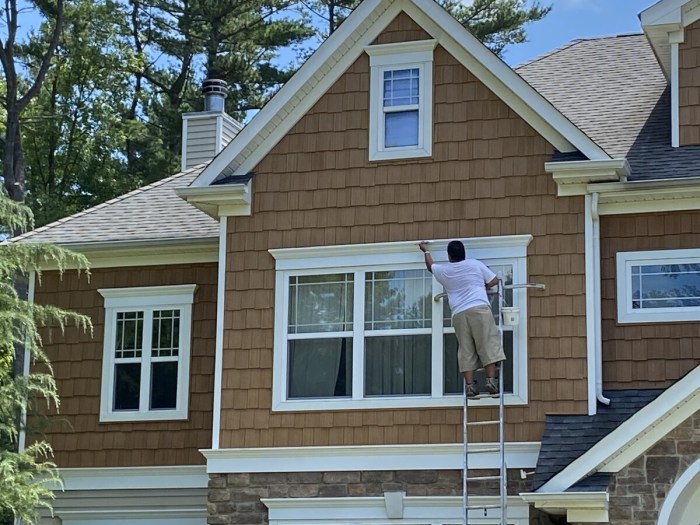
Source: storables.com
Composite 365 siding offers a remarkable opportunity to enhance your home’s curb appeal and seamlessly integrate with a variety of architectural styles. Its versatility in color, texture, and design allows for both classic and contemporary looks, boosting your property’s value and reflecting your style.
Choosing Composite 365 siding allows for significant creative freedom in exterior design. The material’s inherent properties, such as its durability and low-maintenance nature, free homeowners from concerns that might otherwise limit their aesthetic choices. This allows for a focus on achieving the desired visual impact.
Architectural Style Integration
Composite 365 siding adapts well to various architectural styles. For instance, a traditional colonial home might benefit from the deep, rich tones and wood-like textures offered in certain Composite 365 profiles, creating a classic and elegant look. A modern farmhouse could utilize lighter colors and clean lines, enhancing the simplicity of the design. Even a more contemporary home with its sleek lines can be beautifully complemented by the smooth surfaces and subtle color variations available. The adaptability of the material makes it a versatile choice for any architectural vision.
Color and Texture Options
A wide range of color and texture options are available with Composite 365 siding. Imagine a home accented with the warm tones of cedar-look siding, creating a rustic charm. Alternatively, the smooth, clean lines of a stone-like finish could provide a modern and sophisticated aesthetic. Bold colors, like deep blues or vibrant reds, can add a pop of personality, while more neutral shades, such as grays and creams, offer a timeless elegance. The palette is vast, allowing for personalized expression.
Design Considerations for Homeowners
Before selecting Composite 365 siding, several factors should be considered. First, the overall style of the home should be taken into account. The chosen color and texture should complement the existing architectural features. Second, the surrounding landscape and neighborhood should also influence the decision. A siding color that harmonizes with the natural environment and the style of neighboring houses can contribute to a cohesive and aesthetically pleasing streetscape. Finally, the homeowner’s personal preferences should always be prioritized, ensuring that the final choice reflects their taste and style.
Complementing Home Exterior Features
Composite 365 siding can enhance the overall aesthetic by harmonizing with other exterior elements. For example, dark-colored siding can create a striking contrast with lighter-colored windows and doors, adding visual interest. Conversely, light-colored siding can complement darker features, providing a balanced and harmonious look. Similarly, the siding’s texture can be chosen to complement the roofing material, creating a unified and visually appealing exterior. A home with a shingle roof might look best with a siding that echoes the texture of natural wood, creating a cohesive feel.
Consumer Reviews and Feedback
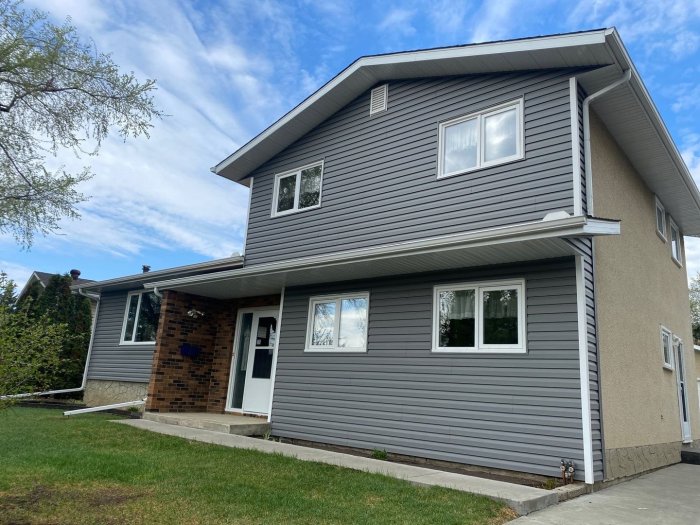
Source: Squarespace-cdn.com
Composite 365 siding, like any building material, receives a range of consumer opinions. Analyzing these reviews provides valuable insights into real-world performance and helps potential buyers make informed decisions. This section summarizes common positive and negative feedback to give a balanced perspective.
Positive Aspects of Composite 365 Siding
Many users praise Composite 365 siding for its aesthetic appeal. The variety of colors and styles allows homeowners to achieve a customized look that complements their home’s architecture. Its low-maintenance nature is another frequently cited advantage. Unlike wood siding, Composite 365 requires minimal upkeep, saving homeowners time and money on cleaning and repairs. Its durability is also a significant selling point, with many users reporting resistance to damage from weather, insects, and rot. Finally, its ease of installation is frequently highlighted, making it a more accessible option for DIY projects or professional installers alike.
Negative Aspects of Composite 365 Siding
Despite its positive attributes, some negative aspects of Composite 365 siding have been reported. Some users have noted that the material can be susceptible to scratches and dents, particularly during installation. The cost is sometimes cited as a drawback, as it’s generally more expensive than traditional vinyl or wood siding. While it is marketed as low-maintenance, some users report occasional staining or discoloration requiring cleaning. A few users have mentioned issues with warping or expansion in extreme temperatures, although this appears to be less common than other reported problems.
Recurring Issues and Problems, Composite 365 siding
Several issues appear consistently in user reviews. Problems with installation, such as difficulty cutting or fitting pieces, are mentioned. While installation is generally considered straightforward, precision is needed to avoid gaps or damage. Concerns about color fading over time, although less frequent than with some other materials, have also been raised. Some users report challenges in matching replacement panels due to slight color variations between batches. Finally, while durability is a major selling point, some instances of damage from severe impact have been reported.
Installation-Related Reviews
User feedback on installation is mixed. While many praise the ease of installation, others highlight the importance of precise cutting and fitting. Incorrect installation can lead to gaps or misalignment, impacting the overall appearance and potentially the weather resistance of the siding. Experience with similar projects or professional installation is often recommended for optimal results.
Durability and Performance Reviews
The majority of reviews emphasize the durability of Composite 365 siding. Its resistance to rot, insects, and moisture damage is frequently lauded. However, reports of damage from severe impacts or scratches, particularly during installation, highlight the importance of careful handling and installation techniques. Long-term performance data remains limited, but initial feedback suggests considerable longevity.
Aesthetic Reviews
Consumer opinions on the aesthetics of Composite 365 siding are generally positive. The variety of colors and styles available allow for considerable customization, enabling homeowners to achieve the desired aesthetic for their homes. However, some users have reported concerns about the uniformity of the material’s appearance, especially when compared to the natural variations of wood.
Overall User Satisfaction
Overall, user satisfaction with Composite 365 siding is generally positive. The low-maintenance nature, durability, and aesthetic options are significant factors contributing to this satisfaction. However, potential buyers should be aware of the potential for installation challenges, the possibility of scratches or dents, and the relatively higher cost compared to some alternatives. A thorough understanding of these factors will aid in making an informed decision.
Epilogue
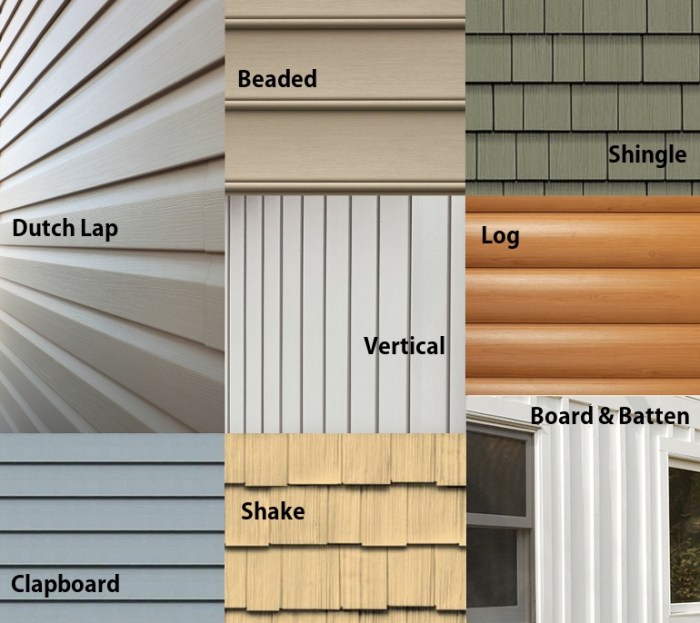
Source: renocompare.com
Choosing the right siding is a significant decision, that impacts both the look and longevity of your home. Composite 365 siding presents a strong contender with its blend of durability, low maintenance, and aesthetic versatility. By understanding its properties, installation process, and potential challenges, you can make an informed choice that aligns with your needs and budget. Remember to weigh the pros and cons carefully, considering factors like cost, lifespan, and your personal aesthetic preferences.
Quick FAQs
Is Composite 365 siding recyclable?
Recycling options vary by region. Check with your local waste management facility for specific guidelines.
How does Composite 365 siding handle extreme temperatures?
It’s designed for a wide temperature range, resisting expansion and contraction better than some other materials. However, extreme conditions might still cause minor issues over time.
Does Composite 365 siding attract pests?
Generally, it’s less susceptible to pest infestation than wood siding, but no material is completely pest-proof. Proper maintenance and regular inspections are still recommended.
What’s the warranty on Composite 365 siding?
Warranty details vary by manufacturer. Always check the specific warranty provided with your purchase.
Can I paint Composite 365 siding?
Paintability depends on the specific type and finish. Check the manufacturer’s recommendations before attempting to paint.
Comments are closed.